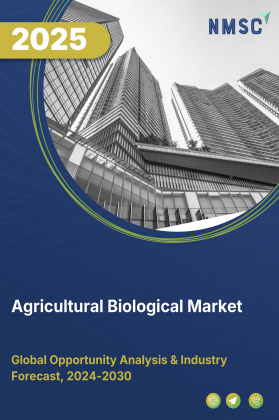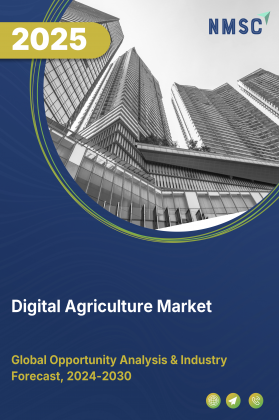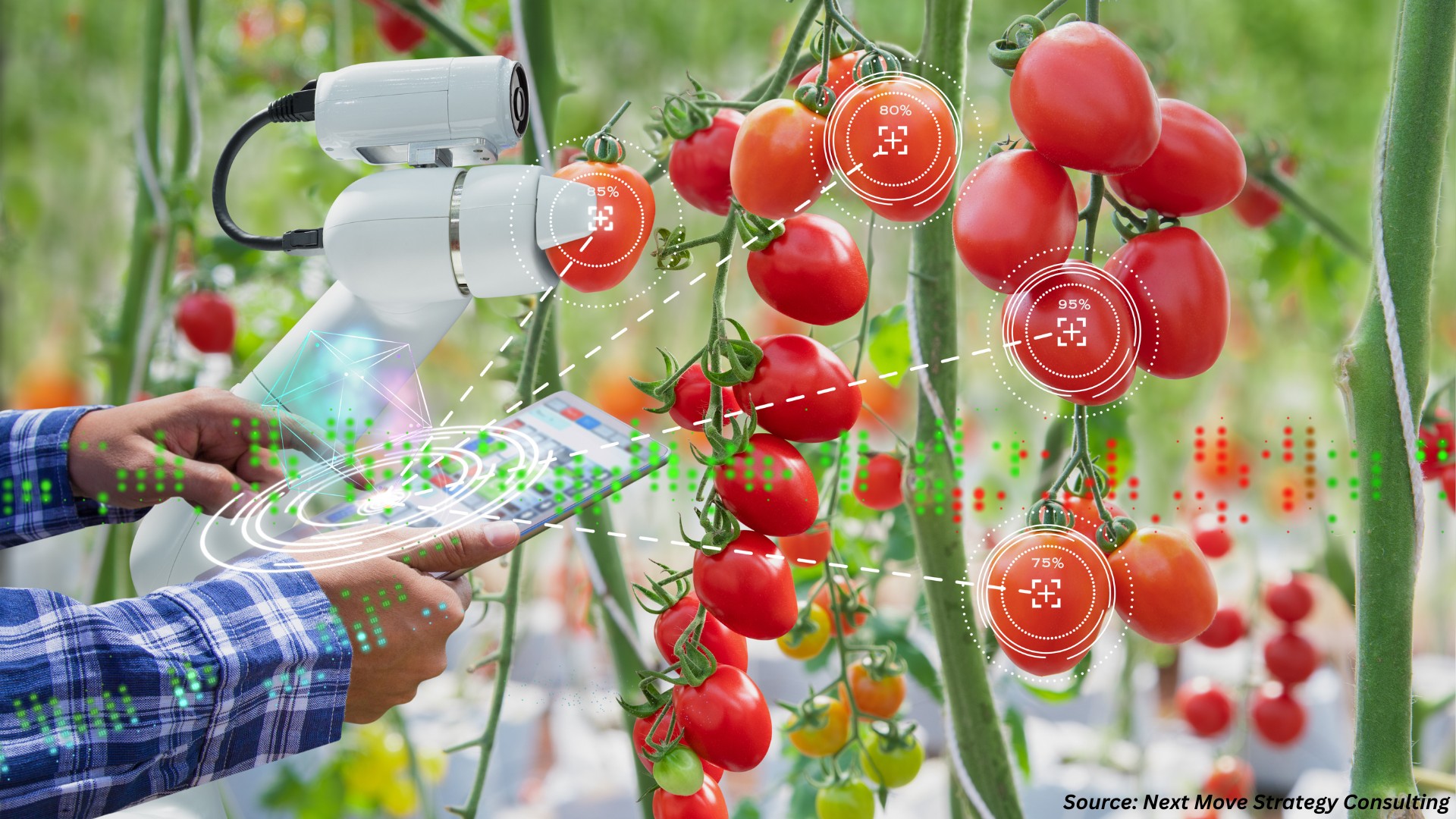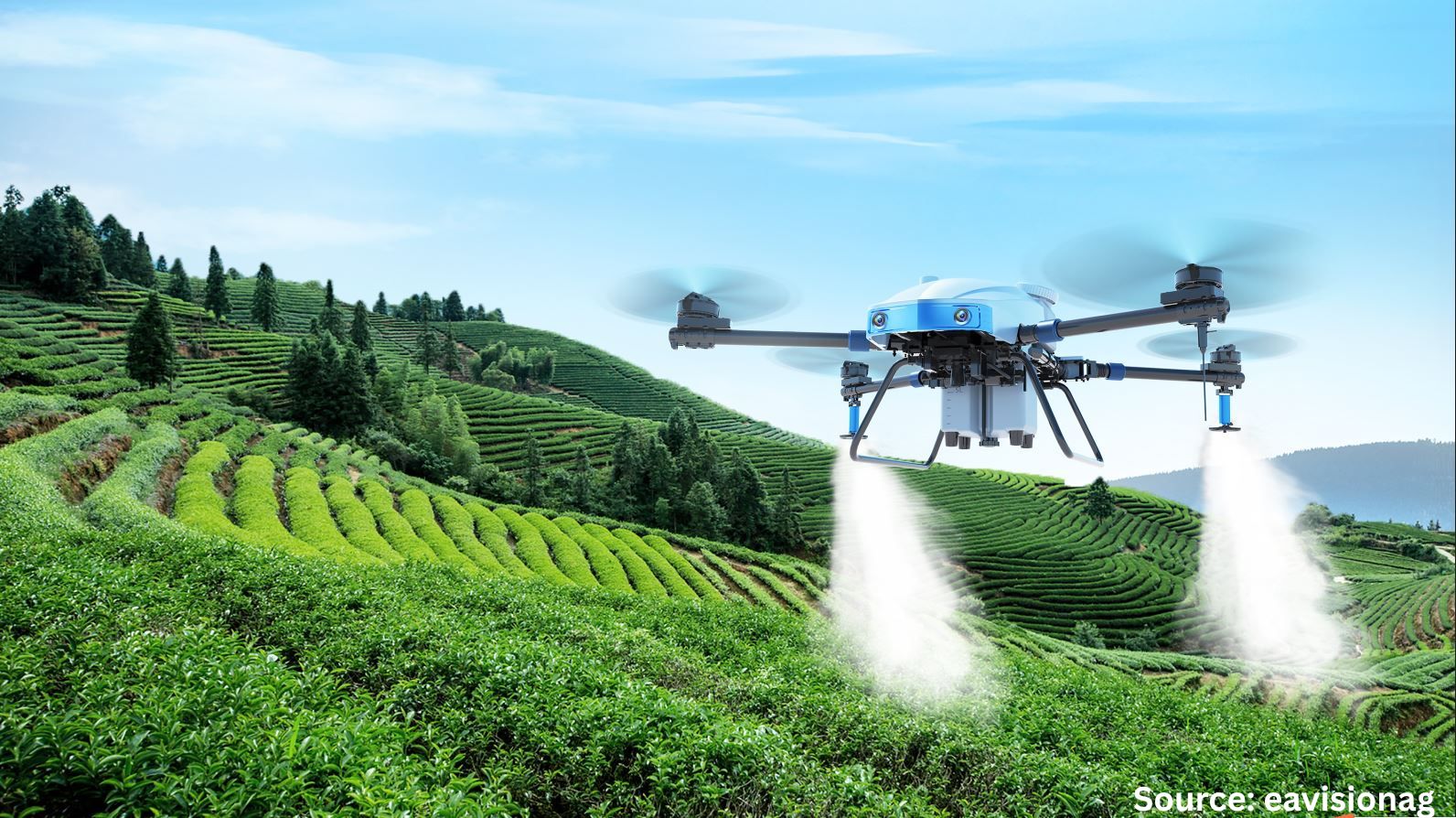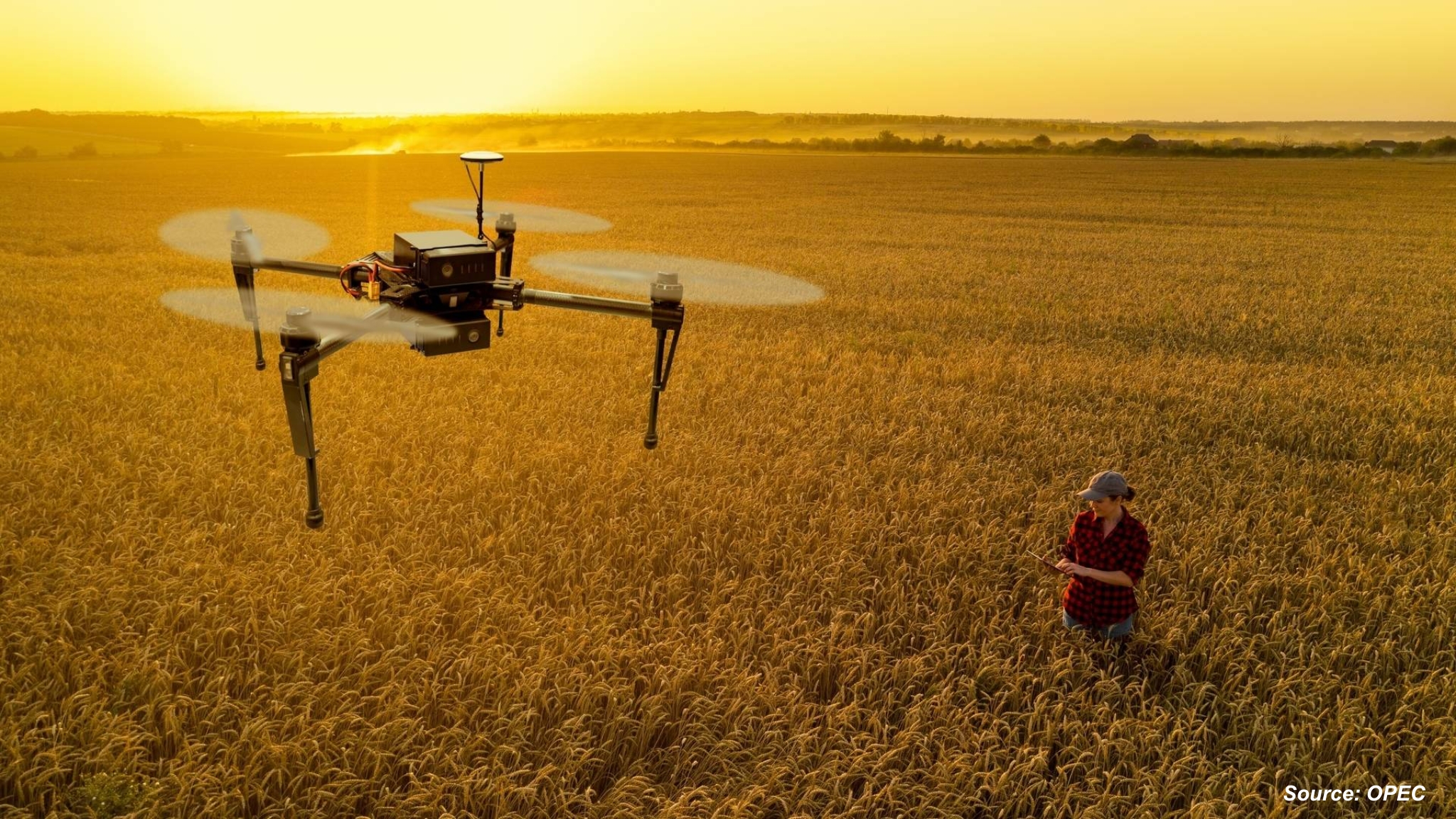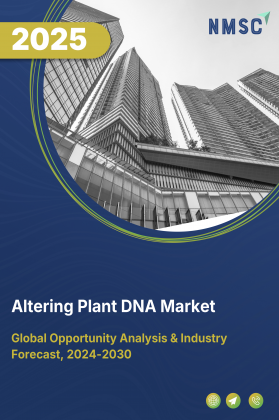
Altering Plant DNA Market by Technology (CRISPR, TALENs, ZFNs and Others), by Crop Type (Cereals & Grains, Fruits & Vegetables, Oilseeds & Pulses and Others), by Trait Type (Biotic Stress Resistance, Abiotic Stress Tolerance and Others), by Application (Yield Enhancement, Disease & Pest Resistance and Others), and by End User (Agricultural Biotechnology Companies, Seed & Crop Production Companies and Others) – Global Opportunity Analysis and Industry Forecast, 2025–2030
Industry Outlook
The global Altering Plant DNA Market size was valued at USD 1.23 billion in 2024, with an estimation of USD 1.42 billion in 2025 and is predicted to reach USD 3.03 billion by 2030 with a CAGR of 15.4% from 2025-2030. The sector is witnessing rapid growth, driven by the ability to develop crops with enhanced traits that meet both farmer and consumer needs.
Advanced gene-editing technologies, such as CRISPR, enable higher yields, improved nutritional content, and resistance to pests, diseases, and environmental stresses, reducing crop losses and dependence on chemical inputs. Rising global food demand and the need for food security further fuel market expansion, while supportive regulatory environments in key regions accelerate commercialization.
Despite challenges from ethical concerns and regulatory hurdles, opportunities in developing climate-resilient and biofortified crops continue to expand, positioning plant DNA alteration as a vital solution for sustainable agriculture and enhanced global food supply.
Enhanced Crop Traits Driving Adoption and Market Growth
One of the primary reasons driving sales in the altering plant DNA market is the ability to develop crops with enhanced traits that meet both farmer and consumer needs. Through advanced gene-editing tools like CRISPR, scientists boost crop yields, enrich nutritional content, and build resistance against pests, diseases, and environmental stresses such as drought, salinity, and extreme temperatures. These innovations not only reduce crop losses and minimize dependence on chemical pesticides but also ensure better-quality, more uniform produce that appeals to global markets.
By simultaneously addressing the challenges of food security, climate resilience, and consumer demand for healthier options, enhanced crop traits have emerged as a cornerstone for the rapid adoption and commercial success of plant DNA alteration technologies.
Supportive Regulatory Environment Boosts the Market Growth
A favorable regulatory environment is significantly boosting the altering plant DNA market growth, as many governments are easing restrictions on gene-edited crops compared to conventional GMOs. For instance, the UK passed the Genetic Technology (Precision Breeding) Act in March 2023, allowing the commercial development and sale of precision-bred plants and products without the lengthy GMO approval process.
Similarly, the European Commission proposed in July 2023 to relax rules on certain new genomic techniques (NGTs), aiming to differentiate them from GMOs and speed up approvals for crops that improve sustainability and food security. These regulatory reforms mark a turning point for the industry, as they not only accelerate innovation and commercialization but also signal growing global acceptance of plant DNA alteration as a viable solution to address food security, climate change, and agricultural productivity challenges.
Rising Global Food Demand & Food Security Needs Fuels the Market Expansion
Rising global food demand and the need for food security are key drivers of the altering plant DNA market demand. Traditional farming faces challenges such as limited land availability, water scarcity, soil degradation, and the growing impact of climate change. Altering plant DNA provides solutions by enabling the development of crops with higher yields, greater resilience to pests and diseases, and improved tolerance to environmental stresses.
It also allows for the creation of biofortified crops with enhanced nutritional value, addressing malnutrition and dietary deficiencies. These innovations make plant DNA alteration essential for strengthening global food supply and nutrition security.
Regulatory and Ethical Challenges Hinders the Market Growth
One of the key restraints of the altering plant DNA market expansion is regulatory and ethical challenges. The development and commercialization of genetically altered crops are subject to strict approval processes, which vary across countries and involve lengthy evaluations for safety, environmental impact, and consumer health.
Public scepticism and ethical debates surrounding genetically modified or gene-edited foods further slow market adoption, as consumer acceptance plays a crucial role in demand. Inconsistent global regulations, combined with societal concerns over biodiversity, long-term ecological effects, and food labelling transparency, create barriers that limit widespread deployment of plant DNA alteration technologies.
Development of Climate-Resilient Crops Creates New Growth Opportunities
One significant opportunity in the altering plant DNA market lies in the development of climate-resilient crops. As extreme weather events, droughts, and soil salinity increasingly threaten agricultural productivity, there is a growing demand for crops that withstand such stresses.
Plant DNA alteration technologies enable the creation of varieties with enhanced tolerance to drought, heat, flooding, and poor soil conditions. This not only secures yields for farmers but also supports sustainable agriculture in regions most vulnerable to climate change. The ability to provide reliable harvests under adverse conditions positions climate-resilient crops as a major growth avenue for the market.
Market Segmentation and Scope of Study
The altering plant DNA market report is divided on the basis of technology, crop type, trait type, application, end user, and region. On the basis of technology, the market is grouped into CRISPR, TALENs, ZFNs, RNAi, ODM, Base Editing & Prime Editing, and others. On the basis of crop type, the market is categorized into cereals & grains, fruits & vegetables, oilseeds & pulses, plantation & specialty crops, forage & animal feed crops, and others. On the basis of trait type, the market is divided into biotic stress resistance, abiotic stress tolerance, quality traits, nutritional traits, growth & development traits, and others. On the basis of application, the market is grouped into yield enhancement, disease & pest resistance, climate stress tolerance, nutritional enhancement, shelf-life extension & post-harvest quality, reduced chemical input, and others. On the basis of end user, the market is categorized into agricultural biotechnology companies, seed & crop production companies, research & academic institRoW.
Geographical Analysis
According to the Foreign Agricultural Service (FAS) in 2025, biotechnology has become a major contributor to the U.S. economy, adding over USD 210 billion to GDP and supporting more than 640,000 domestic jobs. This strong economic foundation highlights North America’s emphasis on agricultural innovation and advanced biotechnology adoption, which serves as a key driver of the altering plant DNA market share.
The region’s robust research ecosystem, coupled with significant government and private sector investments, accelerates the development of genetically engineered and gene-edited crops. With farmers actively adopting technologies that boost yields, reduce chemical use, and enhance climate resilience, and with growing consumer demand for biofortified crops, North America continues to lead global growth in plant DNA alteration.
In Europe, a key driver of the altering plant DNA market is the growing emphasis on sustainable agriculture and environmental protection. European countries are increasingly adopting biotechnology to develop crops that require fewer chemical inputs, use water more efficiently, and reduce greenhouse gas emissions.
Strong government policies and funding support research in gene editing and plant biotechnology, aiming to enhance crop resilience to climate change and improve food security. Additionally, the demand for high-quality, safe, and nutritionally enriched food products encourages the development of biofortified and climate-resilient crops, positioning Europe as a significant market for plant DNA alteration technologies.
The Asia Pacific region’s focus on ensuring food security is a key driver of the altering plant DNA market. According to the India Brand Equity Foundation (IBEF) in 2025, India’s wheat stocks reached their highest level in three years, with the Food Corporation of India planning to purchase 31 million tons of wheat, while rice reserves remain high, potentially boosting exports.
This highlights the increasing adoption of advanced biotechnology and gene-editing techniques in the region to develop crops that are more resistant to pests, diseases, and environmental stresses such as drought and salinity. Government initiatives, rising demand for higher yields, and efforts to produce biofortified and nutritionally enhanced crops are accelerating the adoption of plant DNA alteration technologies, driving market growth across Asia Pacific.
A key driver of the altering plant DNA industry in the Rest of the World (RoW) is the growing focus on export-oriented agriculture. Many countries in regions like Latin America, Africa, and the Middle East are leveraging plant DNA technologies to develop high-quality, uniform, and shelf-stable crops that meet international standards.
By improving crop traits such as yield, disease resistance, and post-harvest durability, these countries strengthen their agricultural exports and compete more effectively in global markets. This drive to enhance trade potential and meet the quality requirements of international buyers is boosting the adoption of plant DNA alteration technologies across the Rest of the World.
Strategic Innovations Adopted by Key Players
Key players in the altering plant DNA industry are accelerating global expansion through upscale brand launches, service diversification, and strategic partnerships.
-
In March 2025, Tropic Biosciences developed a gene-edited banana that resisted browning, aiming to reduce food waste and associated CO₂ emissions. Using CRISPR gene-editing techniques, the company disabled the enzyme polyphenol oxidase, which causes bananas to brown, allowing the bananas to stay fresher for longer, remaining yellow for up to 12 hours after being peeled.
-
In October 2024, Syngenta advanced its HI-Edit technology, applying CRISPR to plant genome editing. The technology helped crops adapt to environmental stresses, including changing weather patterns, and revived crop varieties that had previously fallen out of favor with growers.
Key Benefits
-
The report provides quantitative analysis and estimations of the industry from 2025 to 2030, that assists in identifying the prevailing altering plant DNA market opportunities.
-
The study comprises a deep-dive analysis of the current and future altering plant DNA market trends to depict prevalent investment pockets in the market.
-
Information related to key drivers, restraints, and opportunities and their impact on the market is provided in the report.
-
Competitive analysis of the players, along with their market share is provided in the report.
-
SWOT analysis and Porters Five Forces model is elaborated in the study.
-
Value chain analysis in the market study provides a clear picture of roles of stakeholders
Altering Plant DNA Market Key Segments
By Technology
-
CRISPR
-
TALENs
-
ZFNs
-
RNAi
-
ODM
-
Base Editing & Prime Editing
-
Others
By Crop Type
-
Cereals & Grains
-
Fruits & Vegetables
-
Oilseeds & Pulses
-
Plantation & Specialty Crops
-
Forage & Animal Feed Crops
-
Others
By Trait Type
-
Biotic Stress Resistance
-
Abiotic Stress Tolerance
-
Quality Traits
-
Nutritional Traits
-
Growth & Development Traits
-
Others
By Application
-
Yield Enhancement
-
Disease & Pest Resistance
-
Climate Stress Tolerance
-
Nutritional Enhancement
-
Shelf-Life Extension & Post-Harvest Quality
-
Reduced Chemical Input
-
Others
By End User
-
Agricultural Biotechnology Companies
-
Seed & Crop Production Companies
-
Research & Academic Institutes
-
Government & Public Sector Programs
-
Contract Research Organizations
By Region
-
North America
-
The U.S
-
Canada
-
Mexico
-
-
Europe
-
The UK
-
Germany
-
France
-
Italy
-
Spain
-
Denmark
-
Netherlands
-
Finland
-
Sweden
-
Norway
-
Russia
-
Rest of Europe
-
-
Asia-Pacific
-
China
-
Japan
-
India
-
South Korea
-
Australia
-
Indonesia
-
Singapore
-
Taiwan
-
Thailand
-
Rest of Asia-Pacific
-
-
Rest of the World
-
Latin America
-
Middle East
-
Africa
-
Key Players
-
Bayer
-
Syngenta Group
-
Limagrain
-
Pairwise
-
Inari
-
Tropic Biosciences
-
Benson Hill
-
Arcadia Biosciences
-
Precision BioSciences
-
KeyGene
-
Plastomics
-
Meiogenix
-
PlantArc.
Report Scope And Segmentation
|
Parameters |
Details |
|
Market Size in 2025 |
USD 1.42 Billion |
|
Revenue Forecast in 2030 |
USD 3.03 Billion |
|
Growth Rate |
CAGR of 15.4% from 2025 to 2030 |
|
Analysis Period |
2024–2030 |
|
Base Year Considered |
2024 |
|
Forecast Period |
2025–2030 |
|
Market Size Estimation |
Billion (USD) |
|
Growth Factors |
|
|
Countries Covered |
28 |
|
Companies Profiled |
15 |
|
Market Share |
Available for 10 companies |
|
Customization Scope |
Free customization (equivalent to up to 80 working hours of analysts) after purchase. Addition or alteration to country, regional, and segment scope. |
|
Pricing and Purchase Options |
Avail customized purchase options to meet your exact research needs. |
















 Speak to Our Analyst
Speak to Our Analyst




